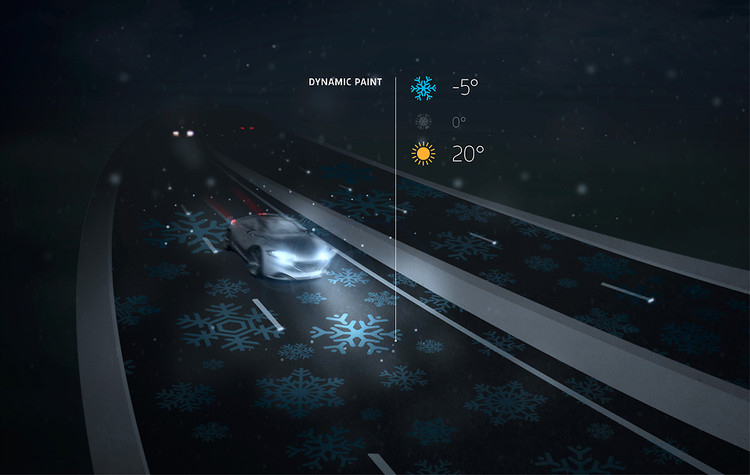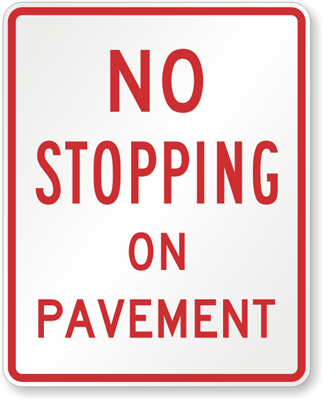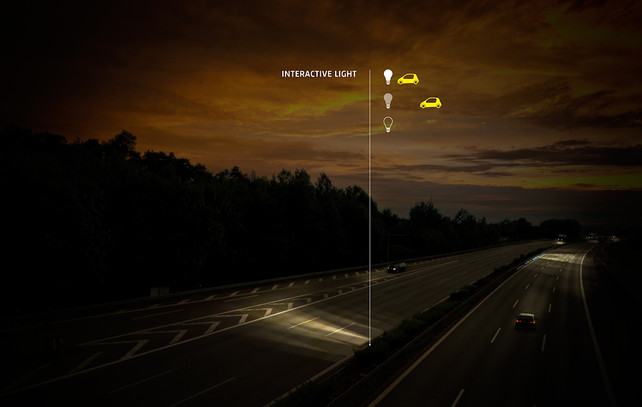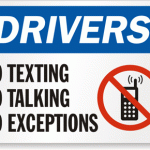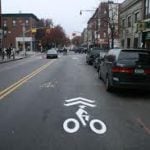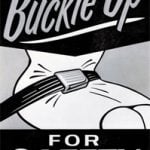An innovation in road safety: the Smart Highway to debut in Holland
Communication about inclement weather would be part of the “Dynamic Paint” system proposed by the Dutch design team (via Studio Roosegaarde).
Reflectivity on the roads might be getting a whole new coat of paint soon, thanks to some innovative ideas coming out of Europe. Dutch designer Daan Roosegaarde, working alongside the civil engineers at Heijmans Infrastructure, have come up with a system of road improvements they’re calling the Smart Highway.
The Smart Highway doesn’t replace any road system wholesale; rather, with some neat innovations, existing roads can be modified to improve visibility and information relayed back to drivers. For example, the designers have come up with “dynamic paint”, which would communicate with drivers about weather patterns and traffic changes. When the temperature drops below freezing and the roads are slick with ice or freezing rain, the paint would activate, covering the road with bright outlines of snowflakes.
Another facet of the Smart Highway would involve what they call “interactive lighting”: glow-in-the-dark paint treated with “photo-luminizing” powder, which would charge from daytime’s sunlight to provide up to ten hours of night luminescence. Interactive lighting could potentially reduce the heavy reliance on overhead light, would be an innovation that environmentalists, urban landscape activists, and city comptrollers could all appreciate.
Reflective signs already in use rely on the retroreflection of oncoming car headlamps, since overhead light isn’t directed at those sign surfaces. Smart Highway’s technology might amplify the reflectivity of road signs via the interactive surface lighting, since the angle of illumination would be more multidirectional than traditional overhead lighting.
Critical messages about road conditions and rules, like this one, are already reflective by MUTCD requirements, but interactive and dynamic road lighting might improve their visibility and longevity even more .
Another more ambitious facet of the plan involves using the road to charge electric vehicles, a holy grail for advocates of increased reliance on alternative-fuel vehicles. Roosegaarde and Heijmans Infrastructure envision an “Induction Priority Lane,” where one lane of traffic is dedicated to electric cars, and will charge their batteries as they pass overhead via a series of induction coils embedded under the asphalt.
Induction charging isn’t a new concept; researchers have been thinking for a long time how best to increase the range in which electric vehicles can travel in one trip. However, this technology might be the furthest from implementation, since installation of sub-surface induction coils is expensive and time-consuming, and researchers have some unanswered questions about effects on passengers.
By changing the way highways are equipped for night driving, the design team hopes to not only improve visibility on the roads, but also to improve the urban landscape. While car trends have shifted depending on changing perceptions about our fuel footprint – witness the shift from the SUV to the Mini Cooper – highways have mostly remained asphalt arteries with very little innovation or design consideration. “We live in a city of endless gray concrete roads, surrounded by steel lamps. They have a huge visual impact on our city,” says Roosegaarde. “But why do they remain so rough and without imagination? Why not make them a vision about mobility, a symbol of the future?”
Interactive lighting and ambient photo-luminizing paint would create a more harmonious and environmentally-friendly highway landscape (via Studio Roosegaarde).
Although it’s currently just conceptual, the Smart Highway design team promises that the first few meters will be installed in the Netherlands in 2013. While Europe starts implementing components of the Smart Highway concept, road safety engineers here in the US should start looking at ways to import some of the design, like photo-luminizing paint to mark boundaries of parking lanes or exiting traffic lanes, which would improve night visibility on our private and public roads. Those dynamic road snowflakes might be a long while coming, but many drivers will agree, that vital communication during adverse conditions would be worth it.
– K. Cavouras
Related Posts
Category: News











